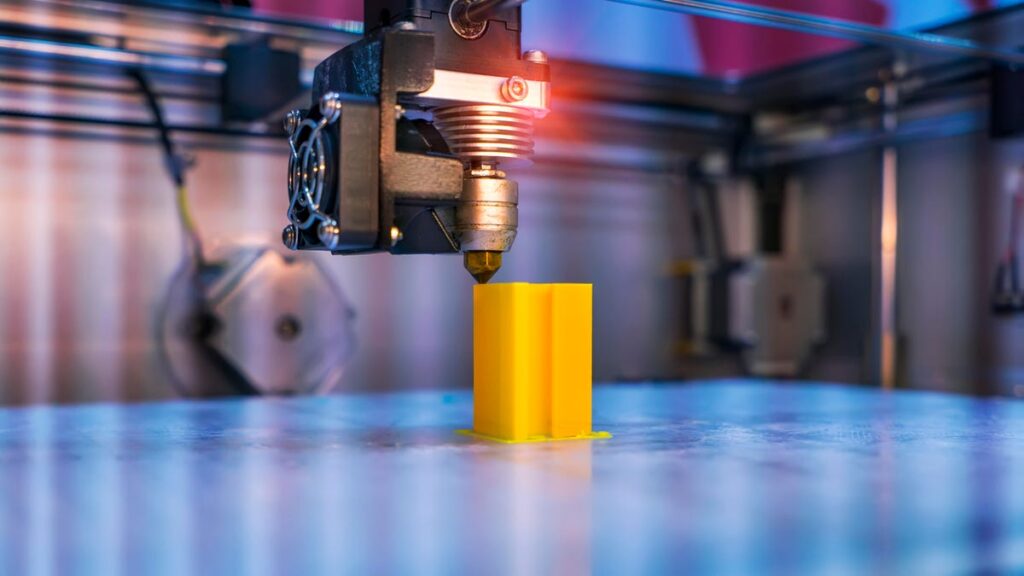Last Updated on September 25, 2024 by Adams
Where 3D Printing is used?
3D Printing, often referred to as additive manufacturing, has created a wide range of new industrial opportunities. Innovative companies may now produce high-quality prototypes and goods that previously seemed difficult to produce.
This article will examine the operation of 3D printing and how it is changing production across a variety of sectors, including the fashion and medical industries.
We’ll also look at some of the most creative applications of this technology now being employed, as well as the kinds of materials that are currently being used in 3D printing applications.
3D Printing: Making the Impossible, Possible
3D printing has created new pathways and chances in a variety of fields, including industry, space exploration, architecture, and more.
3D printing will continue to push the boundaries of what we think is feasible, from lowering the price of customized manufacturing to building geodesic domes on Mars. Here are some examples of how 3D printing has already altered our surroundings.
How do you get started with 3D printing?
3D Printing is an additive manufacturing process that creates three-dimensional objects out of computer databases. Layers of material are successively added until the full item is produced.
The advantage of 3D printing over conventional manufacturing techniques is its ability to produce intricate shapes that are otherwise impractical to fabricate in any other way.
Additionally, it is both cheaper and faster than conventional procedures. So 3D printing is a terrific option if you want to make something special or complicated.
What do the nine categories of 3D printing entail?
Despite the huge range of printers available, only nine basic types of 3D printing technologies are now in use:
- Stereo lithography (SLA)
- Fused deposition modeling (FDM),
- Selective laser melting (SLM)
- Digital light processing (DLP)
- Electron beam melting (EMB)
- Selective laser sintering (SLS)
- Laminated object manufacturing (LOM)
- Binder jetting (BJ
- Material jetting/wax casting.
The three most widely used are the SLA, FDM, and SLS. These technologies, which make extensive use of 3D printing, have significantly altered how businesses, individuals, consumers, and educational institutions function.
3D Printer Filament which is used commonly
* Corn starch and sugarcane are two sustainable materials used to make PLA (Polylactic Acid) filament. It’s a terrific alternative for those who want to make a sustainable decision.
Since petroleum is used to make ABS (Acrylonitrile Butadiene Styrene) filament, it is not renewable. It is more heat-resistant and stronger than PLA filament, though.
* PLA and ABS filaments are blended to create PETG (Polyethylene Terephthalate Glycol-Modified) filament. It is less prone to warping and possesses the advantages of both filaments.
* Because nylon filament is robust and long-lasting, it is the best material to use when printing components that must resist high temperatures or frequent use.
How does it function?
The technique of creating a three-dimensional object from a digital file, as was previously said, is known as three-dimensional printing. Layers of material are added on top of one another until the required shape is achieved.
Everything from eyeglasses to entire skyscrapers can be made with 3D printing, including prosthetic limbs.
What are a few real-world applications for this technology?
3D printing is utilized in the medical industry to produce implants and artificial limbs. It is used in manufacturing to make product prototypes and molds.
Additionally, it can be used to make sculptures and architectural models. Additionally, it is utilized in the culinary business to make sweets and cake embellishments.
The IoT and 5G Future Together
An whole new industrial revolution is about to begin. One that will witness a significant change in how we generate and manufacture items.
And the frontline of this revolution will be 3D printing. The term additive manufacturing is sometimes used. This technology has limitless potential and is already in use in a wide range of sectors, from aerospace to healthcare, for both small and large objects.
What examples of 3D printing exist?
3D printing is the process of creating actual objects in three dimensions from digital models. An object is constructed via an additive technique by adding materials one at a time.
3D printing has had a tremendous impact on the medical industry. You won’t believe this, but 3D printing can be used to build complete structures.
Thanks to 3D printing, even the culinary arts are breaking through design barriers. A computer design made with 3D software can be used to produce chocolate using a plastic 3D printer.
The ability to 3D print fully functional firearms has grown to be a very divisive topic. Many people have strong opinions about the “Liberator” from Defense Distributed, a working plastic pistol created utilizing 3D printing technology.
Who is the largest 3D printer user?
Businesses still use 3D printers the most, despite the fact that homes are starting to utilize them more frequently. Businesses utilize 3D printers to build models and prototypes of the goods they intend to mass produce. By avoiding the need to manually produce numerous prototypes, they are able to save time and money. Additionally, it enables them to experiment with many designs before choosing one.
Recommended Readings (Rated Recommendation)

